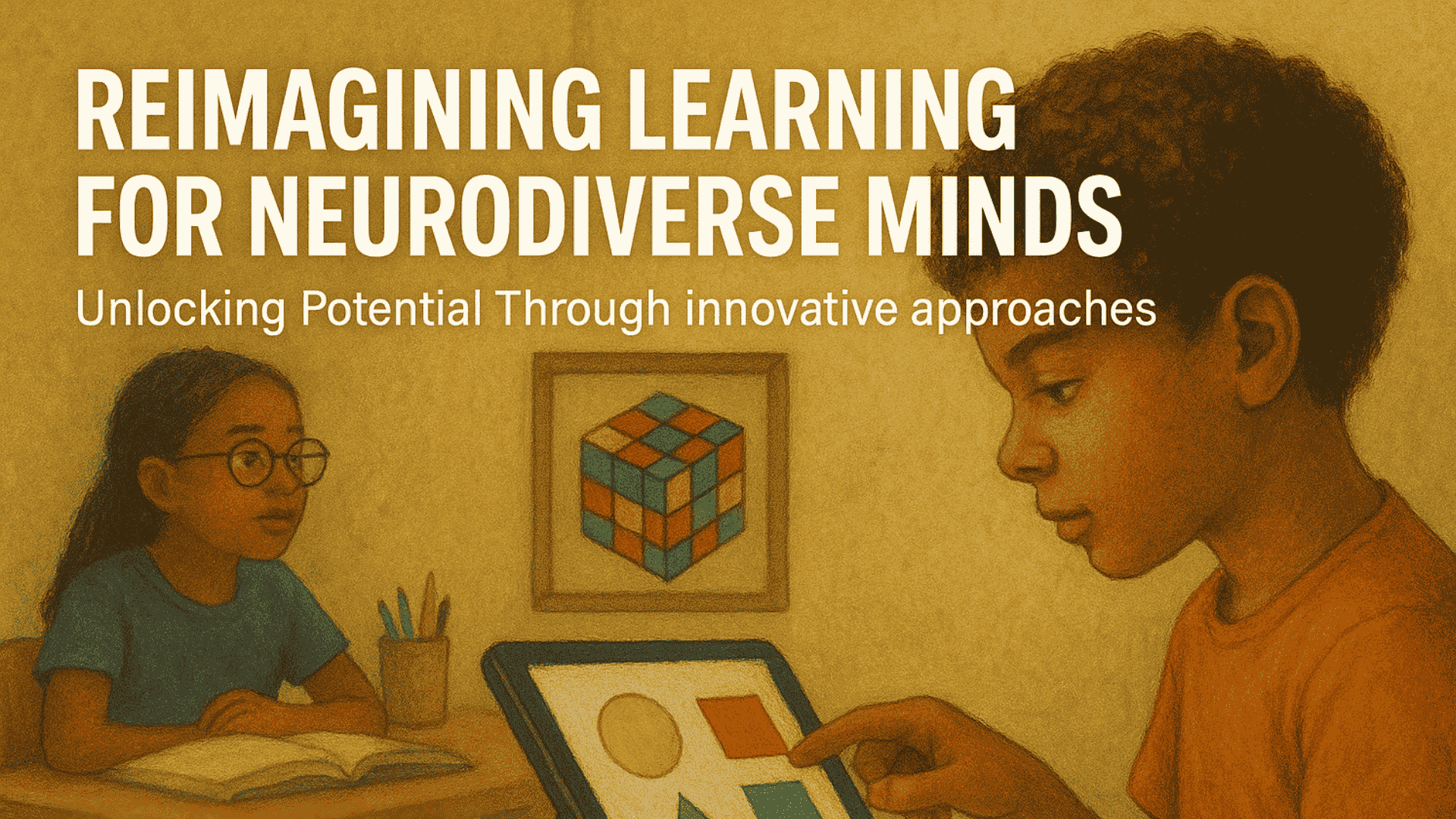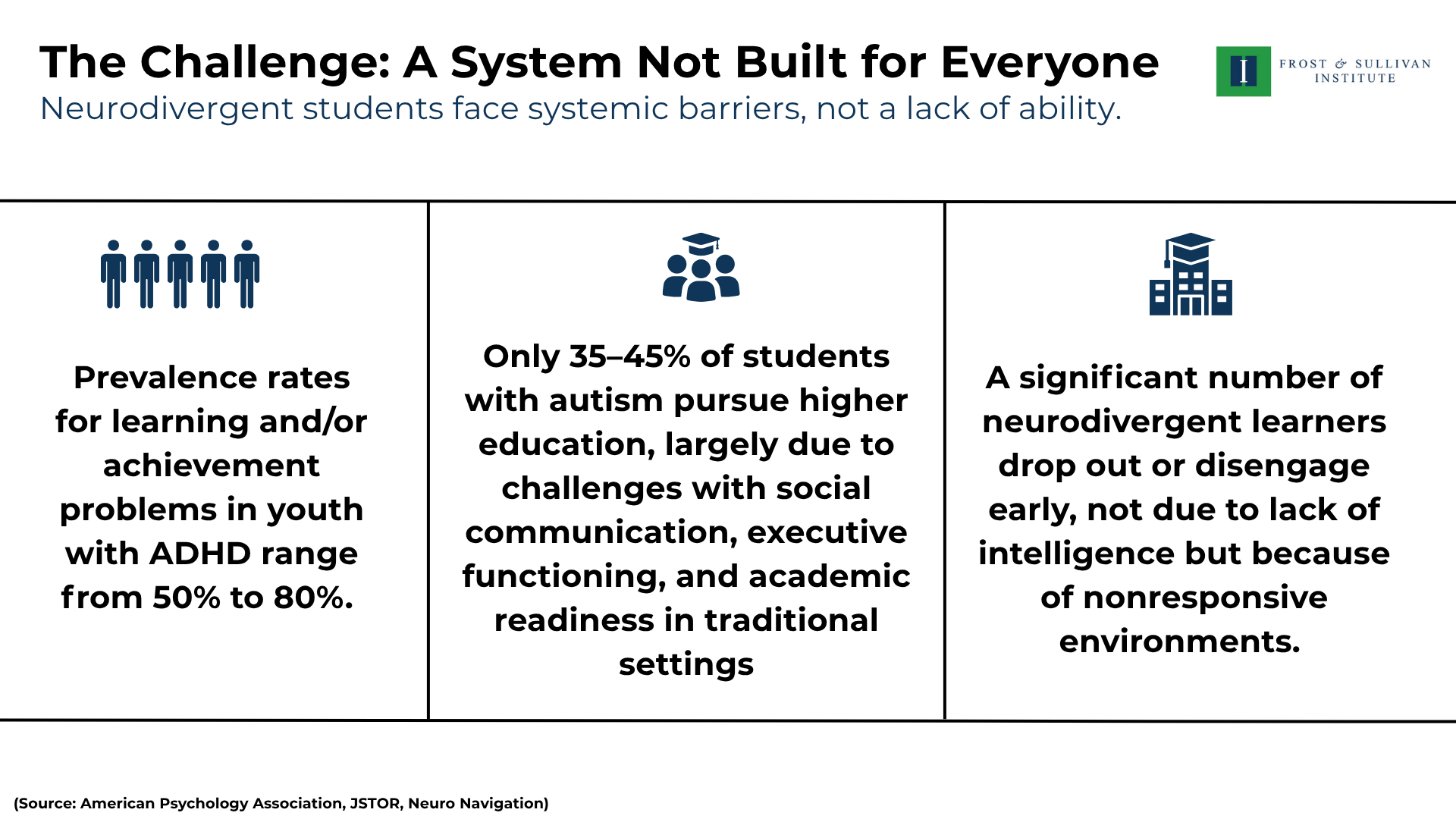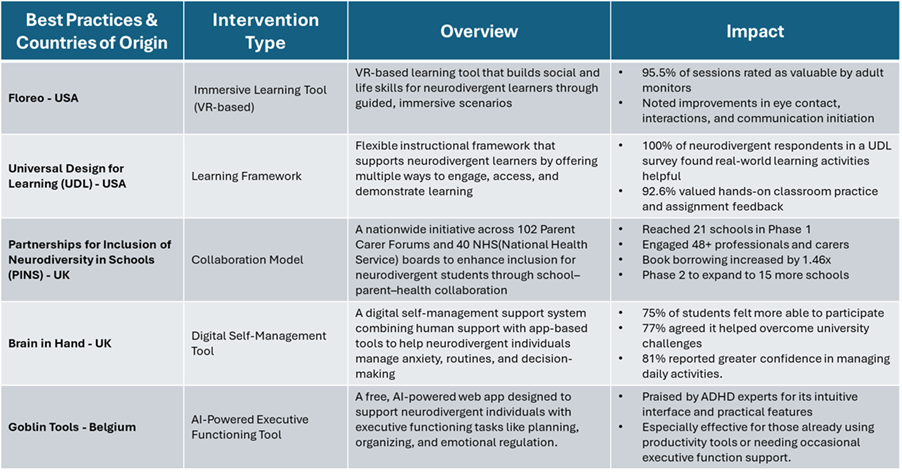
07 Jul Reimagining Learning for Neurodiverse Minds
Globally, an estimated 1 in 100 children is diagnosed with autism spectrum disorder (ASD), and approximately 5-7% of children exhibit attention deficit hyperactivity disorder (ADHD) symptoms. These numbers are steadily rising, with neurodevelopmental disorders becoming increasingly visible in educational and workplace settings. Yet, traditional learning systems continue to follow linear, text-heavy, and passive methods of instruction—modes that often marginalize learners with atypical cognitive profiles.
As the world pushes for inclusivity, equity, and lifelong learning, there is a growing urgency to restructure educational environments that not only accommodate but empower neurodiverse individuals. Creating inclusive learning environments is no longer optional—it is essential.
The Global Health Equity Crisis
Despite decades of global health interventions, more than half of the world’s population still lacks access to essential healthcare services, according to the World Health Organization (WHO). Rural and remote regions continue to face significant disparities in healthcare access, with 56% of rural residents lacking essential healthcare services. Despite overall progress, primary healthcare (PHC) inequalities remain particularly severe in remote rural areas, where geographic isolation and limited infrastructure hinder service delivery. A study from rural China found that healthcare centers equipped with more advanced medical equipment are associated with improvements in the overall infrastructure of village clinics, highlighting the critical role of diagnostic and treatment technology in strengthening rural healthcare systems.
In lower- and middle-income countries (LMICs), access to medical imaging remains severely limited
The Challenge: A System Not Built for Everyone

These figures reflect more than individual struggles—they point to systemic gaps in how education supports neurodiverse learners. As a result, many neurodivergent students disengage—not from lack of intelligence, but from environments that don’t work for them.
Beyond the One-Size-Fits-All Classroom
To truly support every learner, we must move away from uniform systems and embrace inclusive, adaptive models. Reimagining education for neurodiverse minds means creating spaces where flexibility, sensory awareness, and personalized learning are the norm—not the exception. By shifting our approach to teaching, assessment, and classroom design, we can ensure that students with different cognitive profiles are not just accommodated but empowered to thrive.
This shift calls for more than just awareness—it requires practical changes across all levels of the learning ecosystem.
Key Recommendations for Inclusive Learning
To address these disparities, education systems must commit to actionable changes. Here are four key areas to focus on:
- Multisensory Learning Approaches: Immersive, multisensory strategies—such as Total Sensory Immersion (TSI) and Sensory Integration Therapy (SIT)—can significantly enhance learning for neurodivergent students. By engaging multiple senses (sight, sound, touch, and motion), these approaches support better concept retention and help regulate sensory responses. Whether through immersive storytelling, interactive tools, virtual and augmented reality (VR/AR) experiences, or structured sensory activities, these methods make learning more accessible and comfortable, particularly for students with autism and sensory processing challenges.
- Staff Training and Awareness: Teachers must be equipped not only with knowledge of neurodiversity but also with practical strategies to support it. This includes recognizing sensory triggers, adapting lesson formats, and creating calm zones in classrooms. Training should be continuous, context-specific, and designed in collaboration with neurodivergent individuals and their families.
- Inclusive Learning Models: Schools should adopt Universal Design for Learning (UDL) frameworks that allow multiple means of engagement, expression, and representation. Flexibility in assessments—such as visual projects, and oral responses—can provide alternative ways for students to showcase their learning.
- AI and Assistive Technology: From text-to-speech tools and emotion-recognition AI to customized learning apps, assistive technologies are bridging learning gaps. But access to these tools must be equitable, especially in underserved regions where affordability remains a major hurdle.
Several global initiatives are already putting these principles into action. Below are a few standout models worth exploring.

Why Progress Isn’t Universal Yet
Despite best efforts, several barriers continue to limit the scale and effectiveness of inclusive education:
- Infrastructure Gaps: Many schools lack the physical or digital infrastructure to support assistive technology or sensory-friendly designs.
- Cost and Funding: Specialized resources, training, and technology often require significant investment that many education systems, especially in the Global South, cannot afford.
- Accessibility: Rural and underserved communities face challenges in reaching diagnosis, let alone support or tailored interventions.
- Risks of Overstimulation and Tech Misuse: While TSI and other tools offer immense potential, unregulated or poorly designed implementation can overwhelm or distract learners rather than support them.
Toward Inclusive Learning Futures
Every learner deserves a space that recognizes their strengths, supports their needs, and respects their way of understanding the world. As our understanding of neurodiversity grows, education systems must evolve to create environments where all students can succeed. Immersive tools, flexible teaching methods, and stronger partnerships with families are already showing what is possible when learning is designed for everyone.
The Frost and Sullivan Institute sees inclusive education as essential to building a more just and sustainable future. FSI supports innovations that improve access, especially in underserved communities, and encourages collaboration across sectors to reimagine education. This is not only about academic success. It is about creating a world where every learner feels like they belong.
Blog by Sakthi Kumararaja,
Associate, Frost & Sullivan Institute
